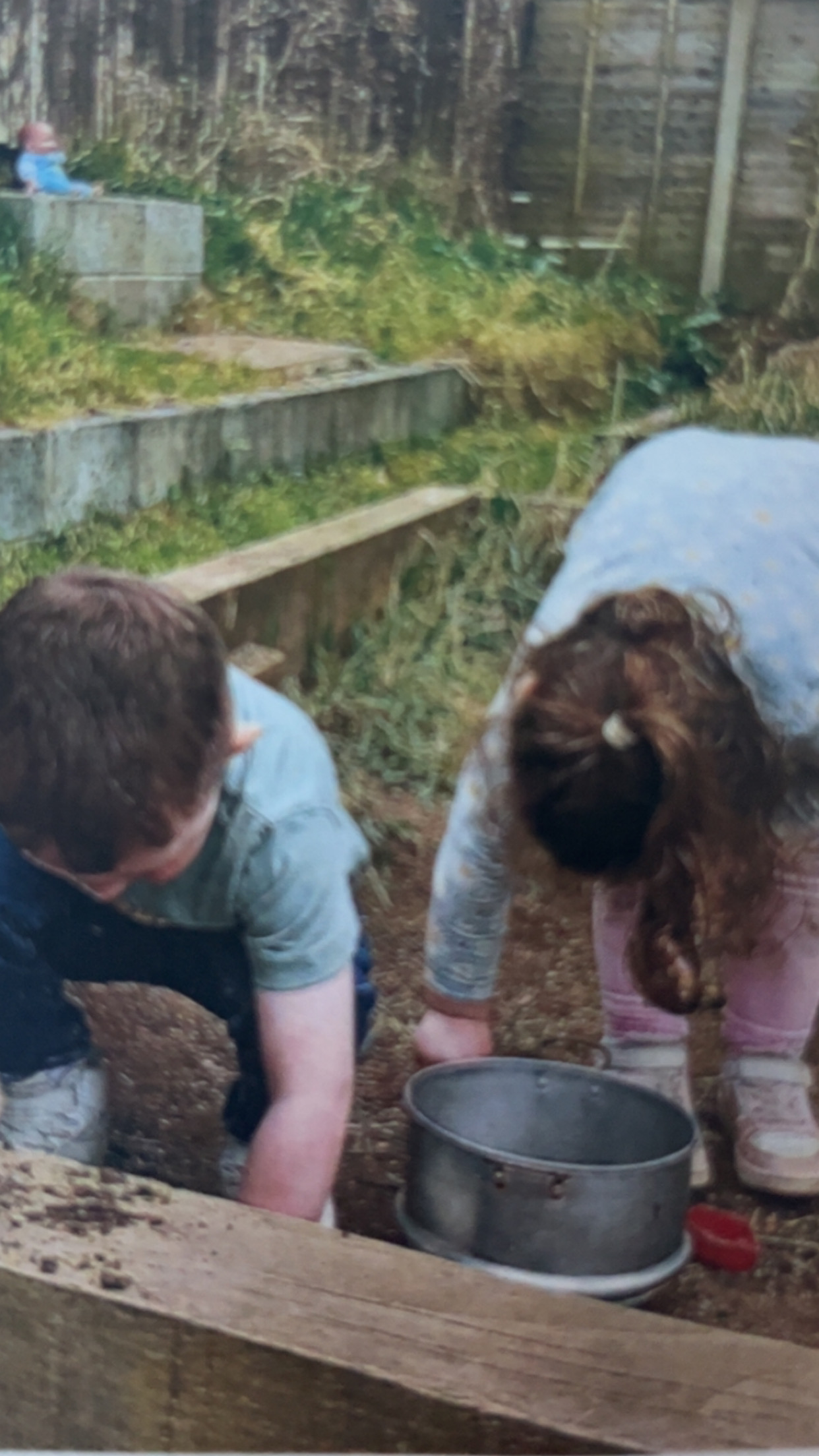 |
11 children from the playschool group took part in the “Small Voices, Big Hopes” video campaign led by the Prevention and Early Intervention team. When asked what made them feel happy and healthy, responses included Pasta,ice cream, hugs, Disneyland, going to church, vegetables, and running outside. This sparked an emergent group project exploring the role of joy, movement, imagination, and food in wellbeing. Guided by Aistear’s play-based principles, the team explored themes of health through outdoor physical play, food experiments, expressive arts, and sensory-rich activities. The highlight was a creative station where children made imaginative “ice cream cones” from shaving foam, food colouring, and recycled materials—bridging their emotional worlds and fostering connection, laughter, and learning. |
|
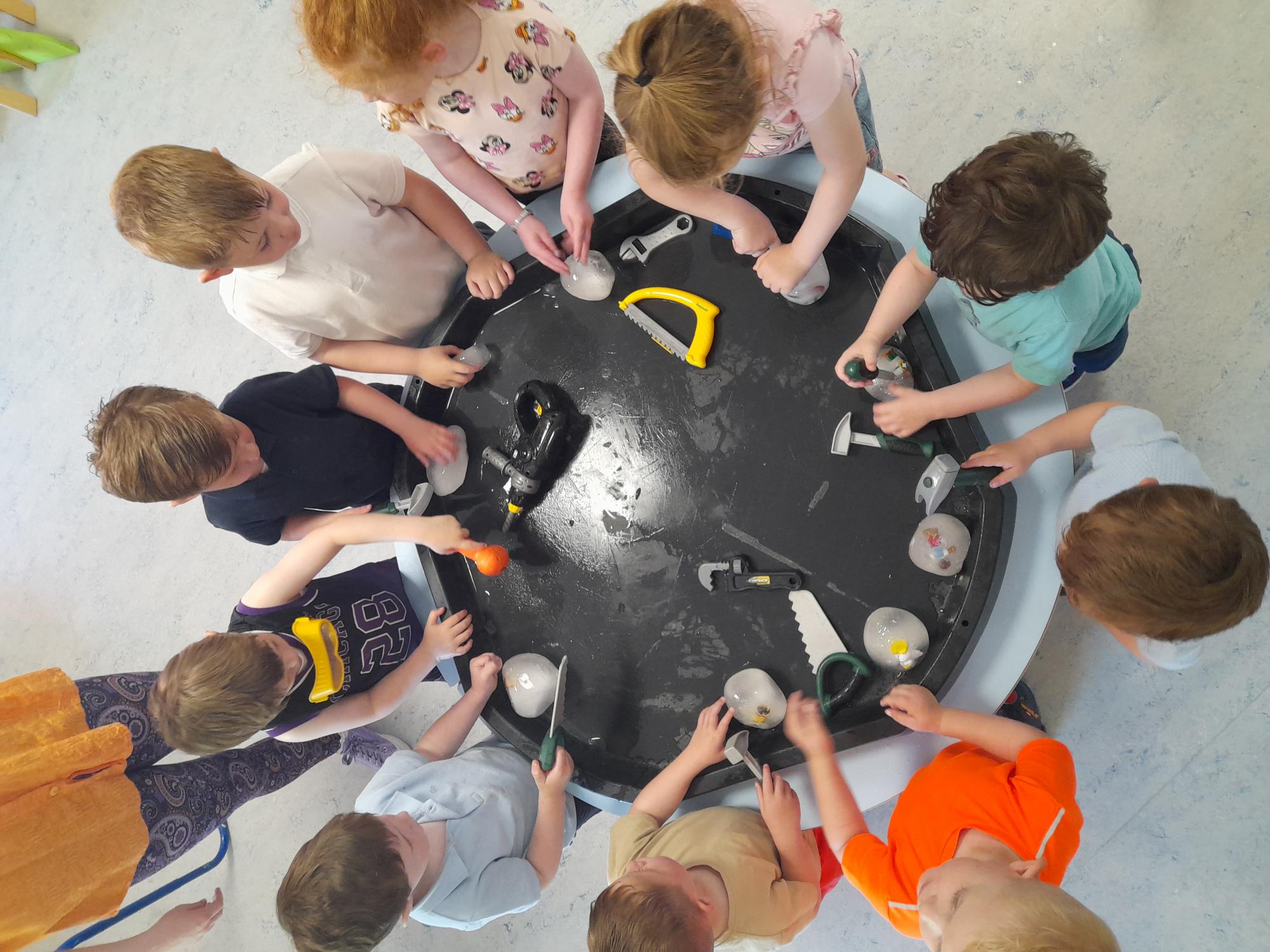 |
The purpose of the “melting ice balloons” activity with preschool children age 3-5 is to promote inquiry based learning, sensory exploration, and critical thinking. The focus is on observing physical changes as ice melts, encouraging predictions, discussion, and experimentation. Set in a playful, hands-on context, children used warm water, salt, and tools to explore and melt ice balloons. Evidence collected included photos, children’s comments and educator observations. Reflections on the documentation revealed growing vocabulary, curiosity, teamwork, and understanding of temperature and change. The activity supported holistic learning through a play-based, inquiry-driven experience.
|
|
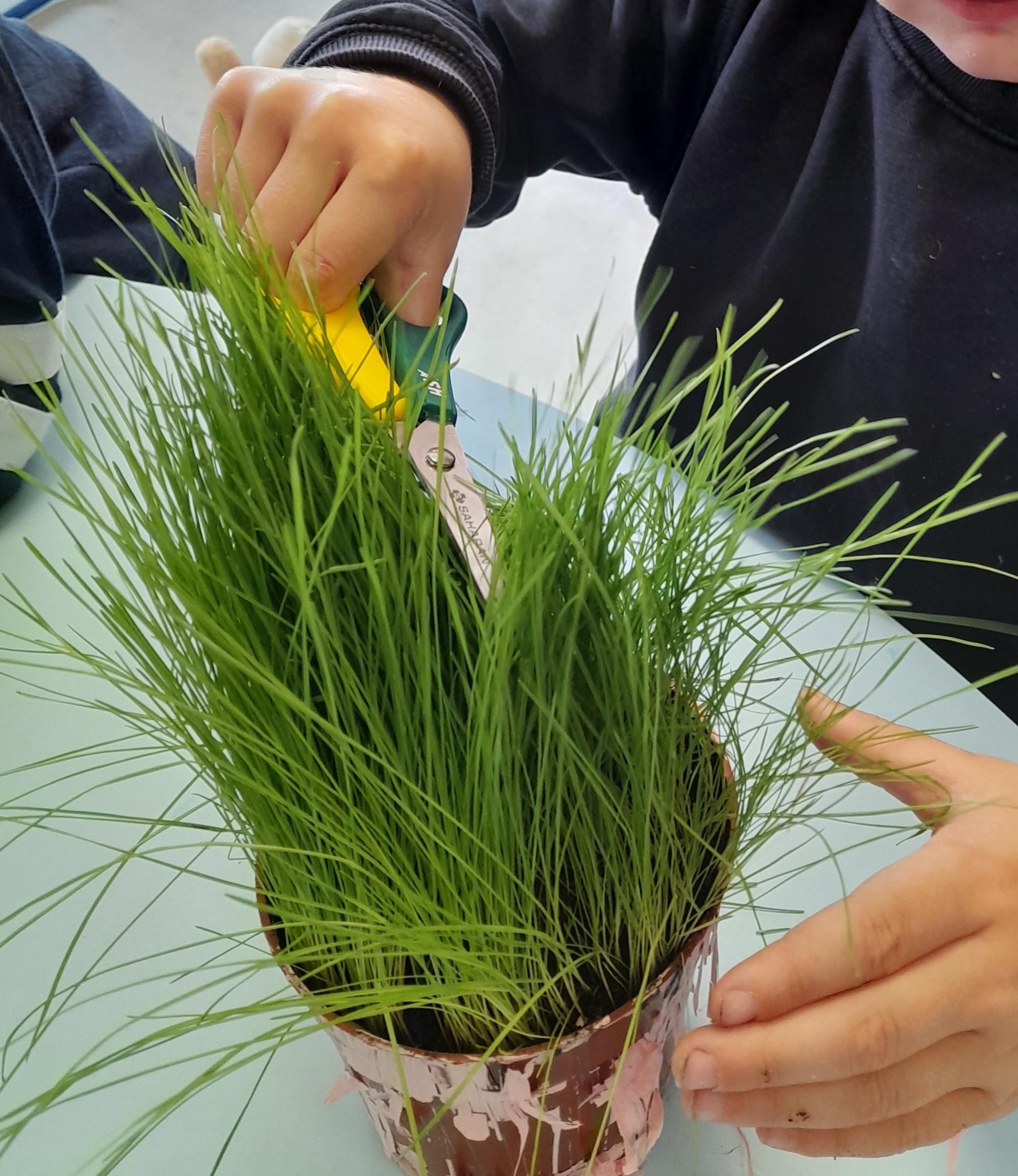 |
The purpose of planting grass seed pot with preschool children aged 3–5 is to foster early scientific inquiry and responsibility through hands-on learning, developing their understanding of nature within their environment. This sensory-rich activity encourages active participation, investigation, and exploration. Children engage directly with soil, seeds, and water, promoting curiosity and discovery. Evidence collected includes photos, observations, and children's reflections.. Through this process, children gain insight into plant life cycles and learn to care for living things. The documentation highlights growth in scientific thinking, sensory engagement, and a developing appreciation for the natural world while also being a fun and promoting social engagement between peers. |
|
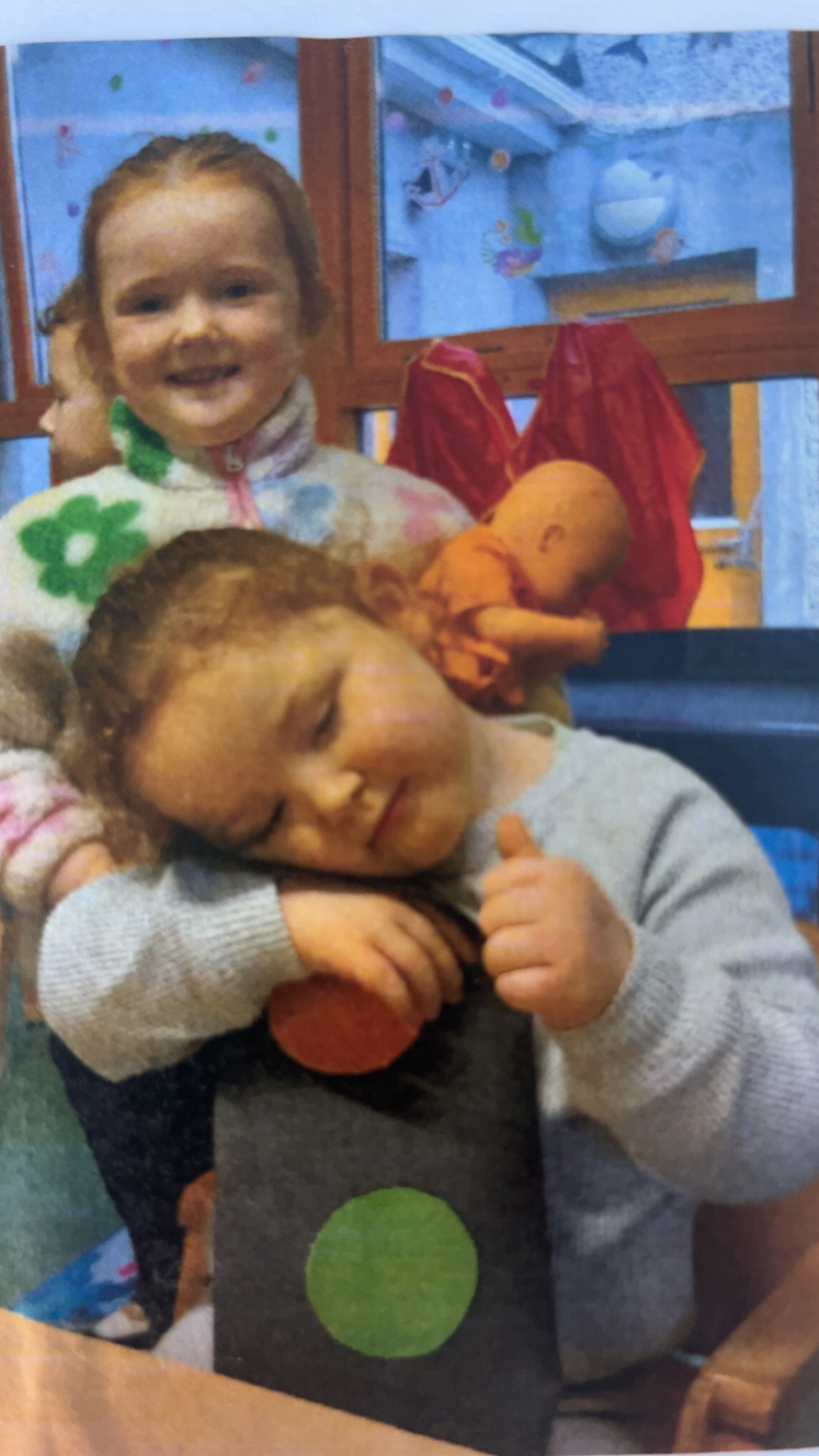 |
Following two road incidents involving children from our playschool, safety on the roads became a heartfelt concern. In response, our early years team developed a child-led project aligned with Aistear’s themes of Wellbeing and Identity and Belonging. The project explored safe behaviours around traffic through play, digital documentation, and interaction with our community police. Coinciding with the introduction of new cycle lanes by Active Travel in our area, we incorporated cycling safety into the curriculum. The project empowered children to process real events, build resilience, and share their learning confidently with families and friends. |
|
 |
Teacher(s): Filomena Almeida and Cristina Mesquita
Affiliation: Agrupamento de Escolas Miguel Torga e Instituto Politécnico de Bragança, Portugal (PT)
This case study describes an educational project developed with a group of children, focused on building knowledge about the desert, a geographical and culturally distant reality from their own. Through a participatory and collaborative approach, the project allowed the children to explore geographical, cultural, and biological concepts, using resources such as internet research, a terrestrial globe, videos, and sensory materials. Peer interaction and the educator's role as a facilitator were crucial for meaningful learning and a holistic understanding of the theme. The case highlights the importance of allowing children to actively construct knowledge, valuing sensory exploration, knowledge exchange, and collective decision-making. |
|
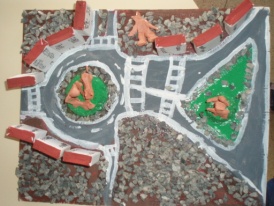 |
Teacher(s): Filomena Almeida anda Cristina Mesquita
Affiliation: Agrupamento de Escolas Miguel Torga and Instituto Politécnico fde Bragança, Portugal (PT)
This case study describes the emergence and development of multiple group projects in a kindergarten, triggered by the reading of the story “When Mama Shouts”, by Juta Bauer (2006). The aim is to explore how children's curiosity can be transformed into meaningful research questions, fostering collaborative learning and family involvement. The focus is on the children's knowledge construction process, their prior conceptions, and how these are challenged and expanded through the project methodology. The evidence collected, including drawings, verbalisations, and interactions, demonstrates the richness of the learning experiences, the cross-curricular nature of the content, and the importance of pedagogical documentation and parental participation in children's meaning-making. |
|
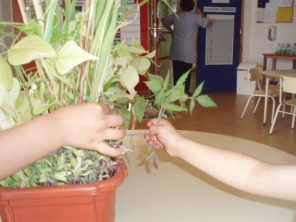 |
This case study explores the emergence and development of an experiential learning project on plant growth, initiated by the curiosity of preschool children. The goal was to investigate where tomatoes come from, expanding to understanding the plant life cycle. The case focuses on the participatory and collaborative approach, where the educator's active listening and the children's autonomy were crucial for meaning-making and acquiring elementary scientific knowledge. The evidence collected, through dialogues, graphic records, and observations, demonstrated the children's active involvement, curricular transversality, and the promotion of scientific thinking. Reflection on the presented documentation highlights the importance of starting from children's interests and providing them with an environment rich in opportunities for exploration and discovery. |
|
 |
This case study aims to explore the intentionality and learning process of a child in a kindergarten setting through the activity of making a cake. The focus is on the child’s planned action, interaction with the educator, and experimentation with ingredients and the environment. The documentation provides evidence of the child’s emerging scientific knowledge, autonomy, influence of the family context, and the role of the adult in mediating and deepening the experience. This case took place in a kindergarten, with evidence collected through direct observation, photographic records, and dialogue with the child. The reflections highlight the importance of intentionality in learning and the educator’s mediation in fostering scientific thinking in young children. |
|
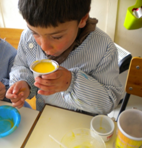 |
Teacher(s): Helena Nascimento and Cristina Mesquita
Affiliation: Polytechnic Institute of Bragança, Portugal (PT)
This case study aimed to document a pedagogical process that began with attentive listening to children’s interests to develop meaningful learning experiences. During the welcoming moment, narratives related to eggs emerged, revealing curiosity and a desire to experiment. The educator planned and implemented a sequence of activities that allowed sensory and symbolic exploration of the egg, integrating diverse materials and promoting interactions between children, adults, and the school community. The collected documentation highlights the adult’s role as mediator, the importance of social interactions in knowledge construction, and the appreciation of childhood culture. Reflecting on the practices developed enables recognition of the transformative potential of active listening and pedagogical documentation. |
|
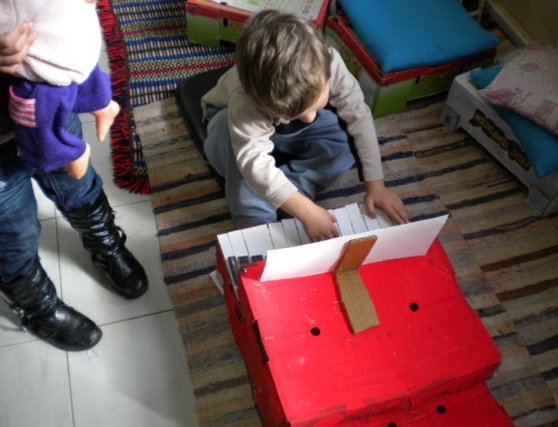 |
Teacher(s): Helena Nascimento anda Cristina Mesquita
Affiliation: Polytechnic Institute of Bragança, Portugal (PT)
This case describes the development of an individual project by a preschool child, focused on building a piano, stemming from a personal interest that arose while listening to a piece of music. The objective was to support the child in exploring materials and carrying out his plan, in a context of strong involvement with the educator, peers, and other adults. The documentation collected (verbal records, photographs, and observations) shows the progressive development of the project and the child's investigative, creative, and social skills. |
|
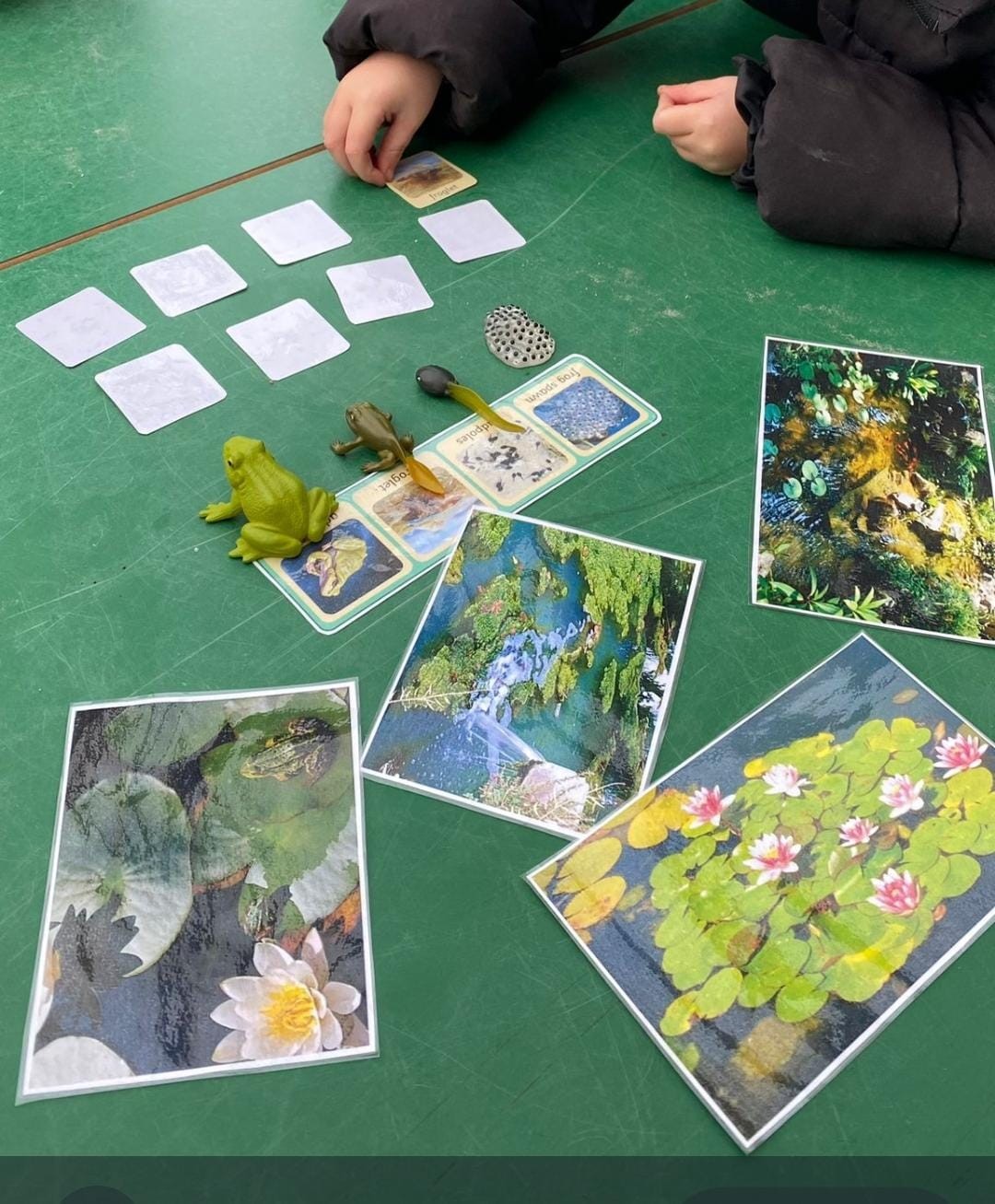 |
The project began when the class mascot, a frog-shaped plush toy, sparked great interest among the children. During a circle time, they were asked if they wanted to learn about frogs, and they responded with great enthusiasm. We explored their prior knowledge and what they were curious to learn. The project combined sensory activities, environmental exploration, and real materials like lily pads. We used educational tools such as frog figurines and life cycle cards. The children created artwork based on their discoveries. They showed deep curiosity and engagement, which extended beyond frogs to other animals, enriching their overall learning experience.
This project continued for several months as each new inquiry reignited the children’s interest in frogs
|
|
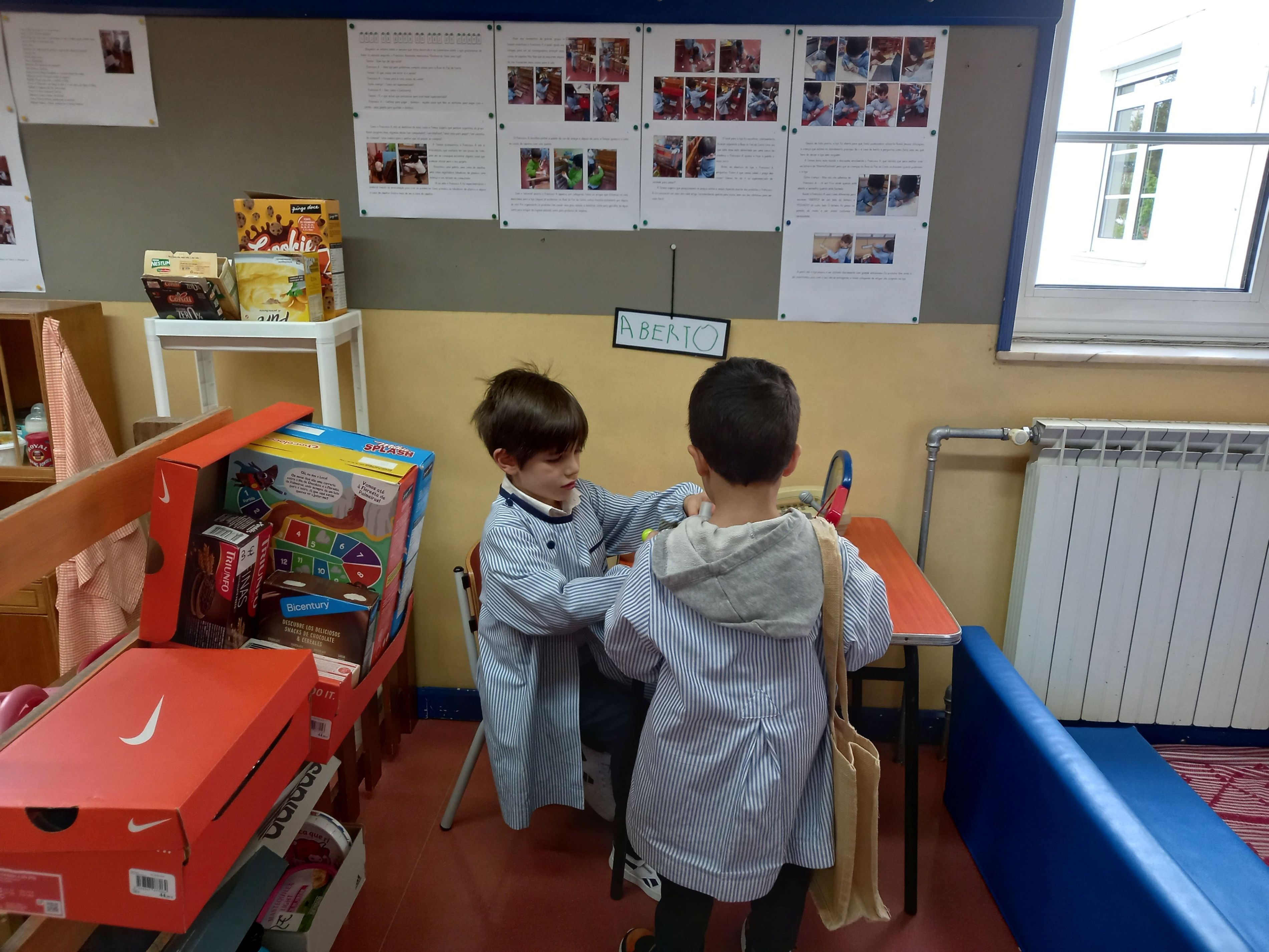 |
In a preschool room with 4-year-old children, Henrique mentioned: "I would like to make a store." From this point, a project emerged, which, although initiated by one child, eventually involved several children in the group, with increasing engagement in both planning and execution, as well as their respective families. This case study presents the different stages of this project, whose documentation allowed us to record and reflect on the process, making visible the children's learning and development, while emphasizing the importance of active listening and the promotion of meaningful learning based on their interests. |
|
 |
The 4-year-old preschool room has a mascot – Ollie – who, along with a record notebook, visits a different child’s home each week. The project "Ollie’s Adventures" aimed to strengthen the partnership between school and family by encouraging the sharing of experiences. The collected documentation, including texts, drawings and photographs, revealed the children’s emotional involvement, the active participation of families and the value placed on their lived experiences. This practice highlighted the importance of continuity between school and home contexts, reinforcing group identity and fostering a love for reading, while meaningful connections and collaborative learning between children, educators and families. |
|
 |
This case study describes a sensory exploration activity conducted with 1-year-old children on November 13, 2024, involving “sensory tunnels” made from cardboard boxes lined with textured materials. With 11 children and 3 adults present, the aim was to stimulate sensory perception and curiosity through free play. Children explored textures such as fabric, sandpaper, sponges and pasta, responding verbally and physically to their discoveries. Educators observed and interacted through open-ended questions. The following day, a sensory panel was created using explored materials. Photos were shared with families, highlighting the value of sensory-rich environments in supporting expression, autonomy and sensory-motor development. |
|
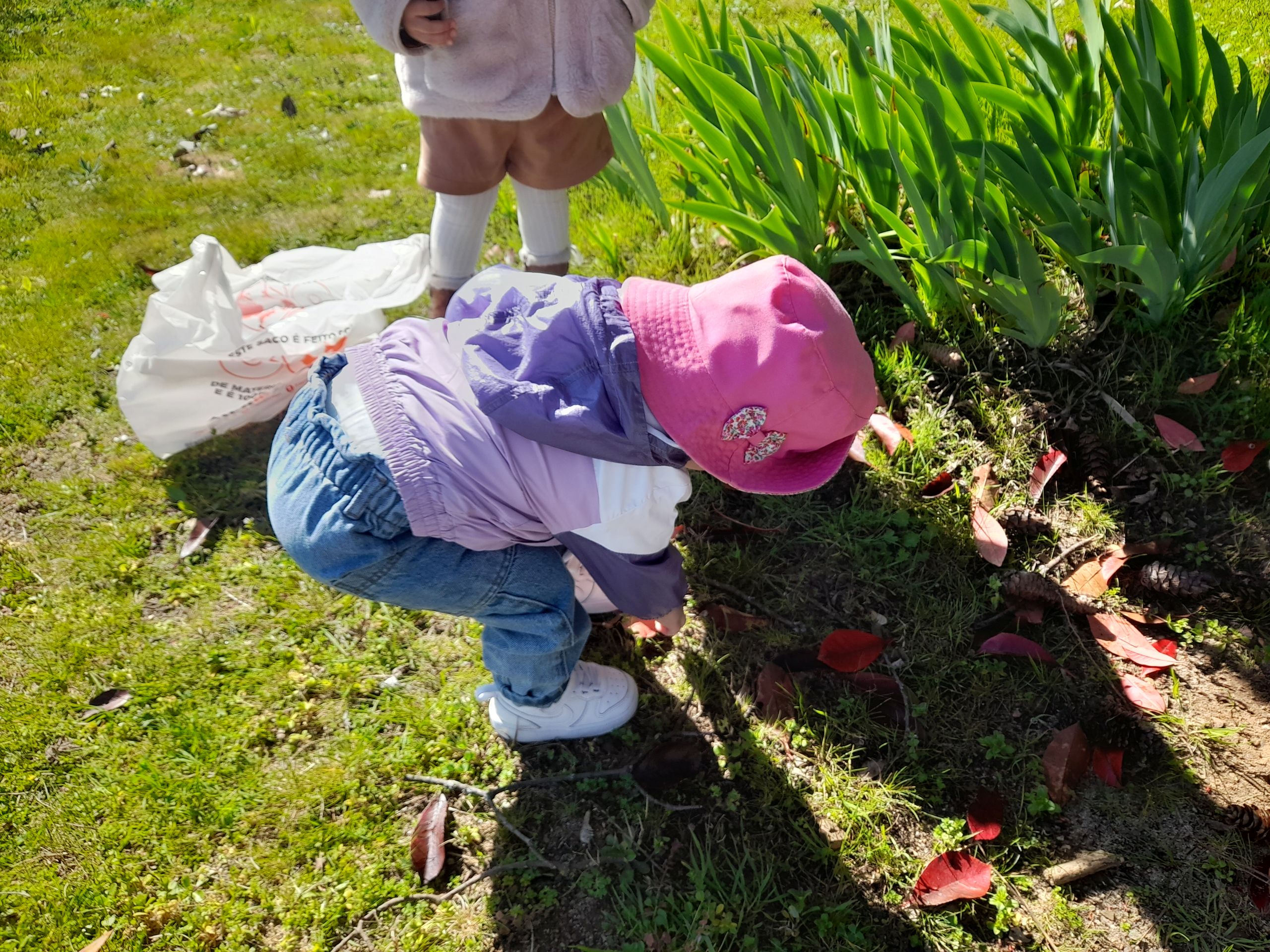 |
This case study explores an activity focused on sensory and creative exploration with natural materials by a group of 1-year-old children. Initiated outdoors through spontaneous play with leaves, soil and sticks, the educator encouraged material collection and later organized them into an accessible space. The children engaged daily in varied activities such as sorting, building and creating art with natural and mixed materials, both indoors and outdoors. Individual observations were recorded, highlighting children’s autonomy and creativity. Parental involvement grew as families contributed materials. Documentation through photos captured the learning process, revealing the value of nature-based play in early development. |
|
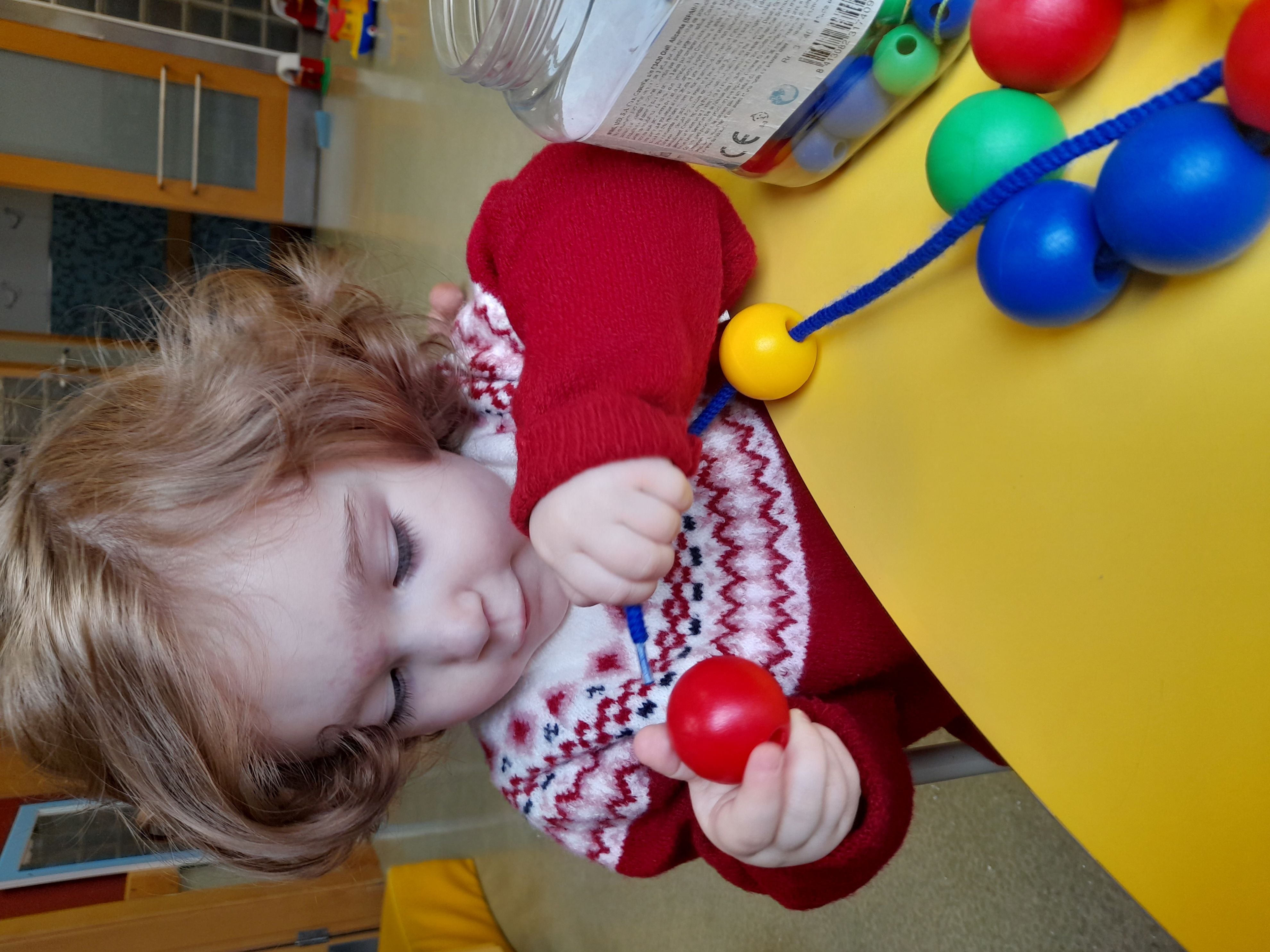 |
This case study focuses on a threading activity introduced to support motor and sensory development in a one-year-old child. Conducted in a activity room setting with age-appropriate materials, the activity encouraged free exploration. Observing the child’s engagement, the educator applied the well-being scale, noting indicators such as confidence, joy and connection. Additional threading tasks, including a Family Day project using pasta and sticks, reinforced consistent involvement. Documentation included photos and videos shared with parents, offering insight into the child's emotional and developmental state. The educator reflected on the positive impact of tailored activities on early well-being and learning through play. |
|
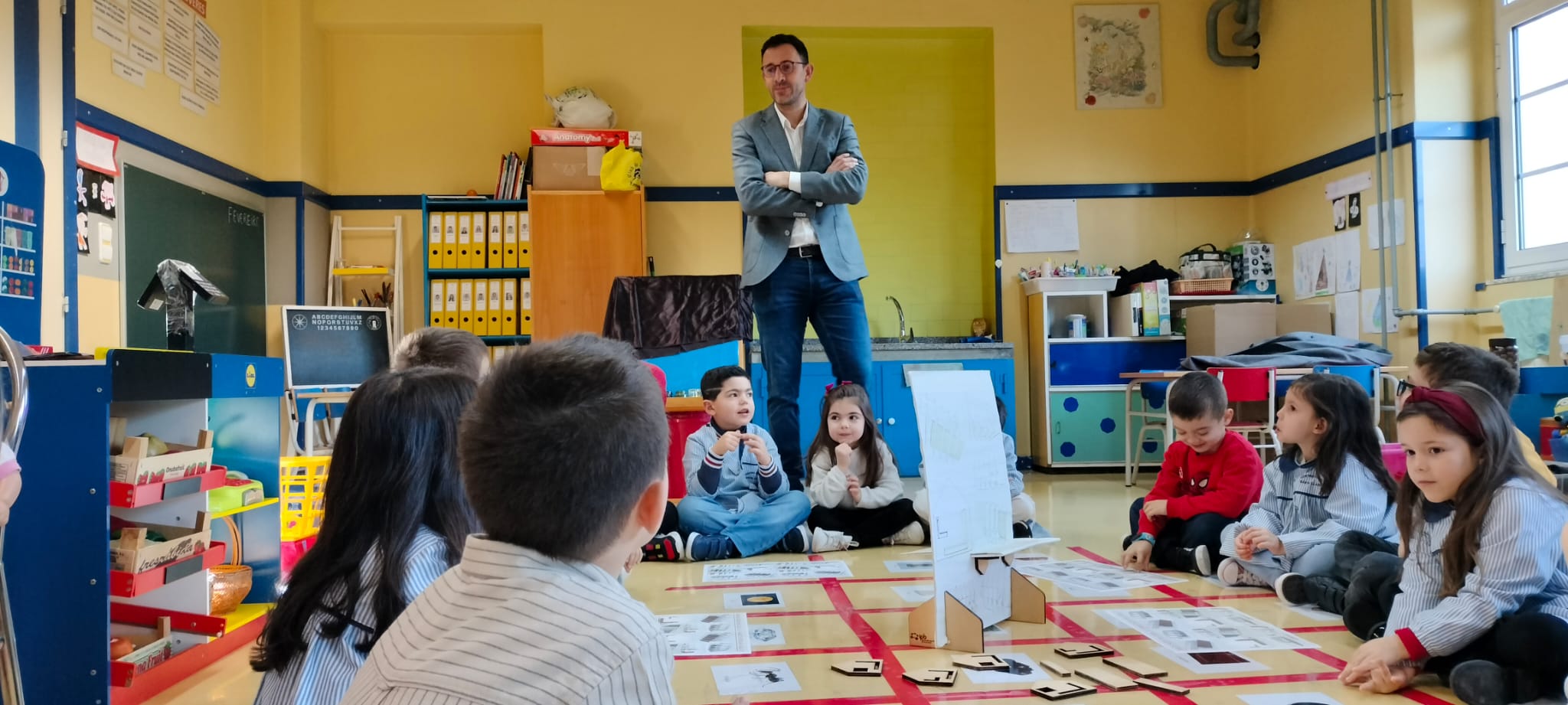 |
As part of the children’s growing interest in professions, a visit from Alice’s father, an architect, was organized to explore this professional role. The case focused on actively listening to children's ideas, sharing with an expert, and engaging in hands-on activities. The context fostered a participatory learning environment, with evidence collected through dialogues, constructions, and drawings. The documentation reveals reflection, creativity, and the integration of new knowledge. The activities stimulated communication, spatial reasoning, and imagination, allowing children to connect experiences and learning in a meaningful way, in collaboration with family and educator. |
|
 |
This case study focuses on conducting a scientific experiment simulating a volcanic eruption, which emerged from the children's spontaneous interest in natural phenomena. The activity was collaboratively built, based on a kit brought in by one of the children, and developed through a protocol created by the group. The experiment encouraged active participation, scientific thinking and observational skills. Pedagogical documentation made the process visible, highlighting the educator’s attentive listening, the children’s appropriation of concepts and the valuing of their ideas, in alignment with the principles of participatory pedagogy. |
|
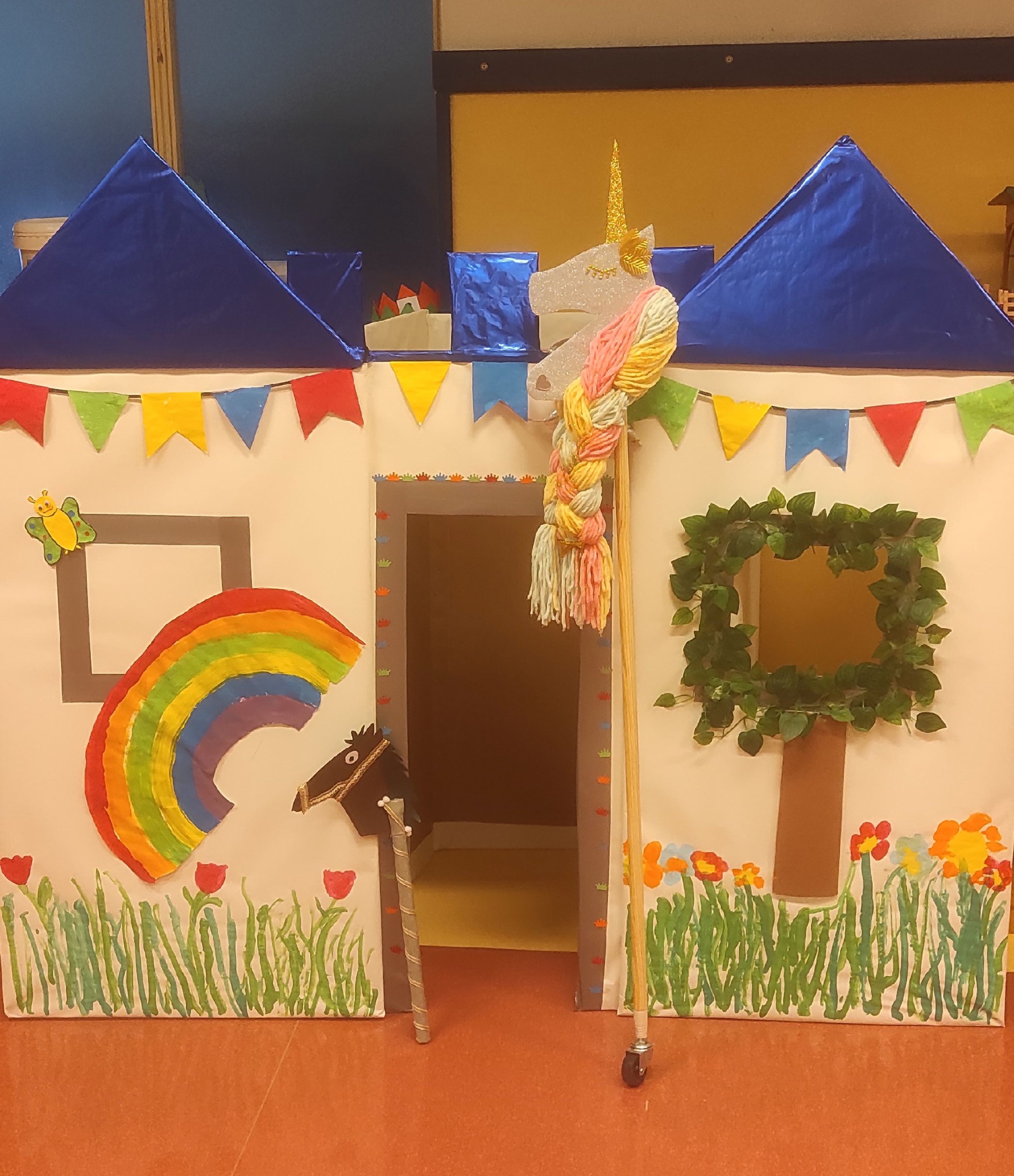 |
The construction of the castle emerged spontaneously from the children's interest, as observed during weekly planning. The main objective was to create a castle to enrich the role-play area, promoting the active participation of both children and families. The focus of the case was the children's involvement in the creative and collaborative process. The context took place in a preschool setting, using recycled materials. The evidence collected included dialogues, photographs and creations made by the children with their families. The documentation reflects a participatory pedagogical approach that values active listening, creative expression and strong school-family collaboration, reinforcing the school-community bond. |
|
 |
The activity began with a large group moment, but the focus of observation and investigation centered on a one-year-old child, in an activity room context.
The starting point was the provision of cardboard tubes of different sizes, freely arranged to allow autonomous exploration, at the child’s own pace and according to individual interests.
The main goal of this approach was to stimulate sensorimotor experimentation and the spontaneous manipulation of objects.
The child began the exploration independently, using a variety of strategies such as stacking the tubes, fitting them inside one another and carrying them around the room. |
|
 |
This case study aims to examine the engagement of 1- and 2-year-old children in the pretend play area. The focus is on how the gradually enriched environment – with items like dolls, a bed, kitchen utensils and accessories – supports symbolic development. The context is a nursery room during free exploration time. Evidence was gathered through continuous observation, noting behaviors such as caring for dolls, imitating daily routines and communicating with peers. The documentation highlights strong emotional, social and communicative involvement. These findings show that pretend play offers a safe and expressive space for children to represent and make sense of the world around them. |
|
 |
This case study follows the educational and developmental journey of O.N., a 1.6-year-old girl who entered a kindergarten group with children at least one year older than her. It explores how the age gap influenced her socio-emotional, cognitive, and communicative development. Over one and a half years, the developmental differences have progressively diminished. The study highlights how intentional pedagogical adaptations and daily observations supported her inclusion and individual growth, offering insight into differentiated teaching strategies for mixed-age groups. |
|
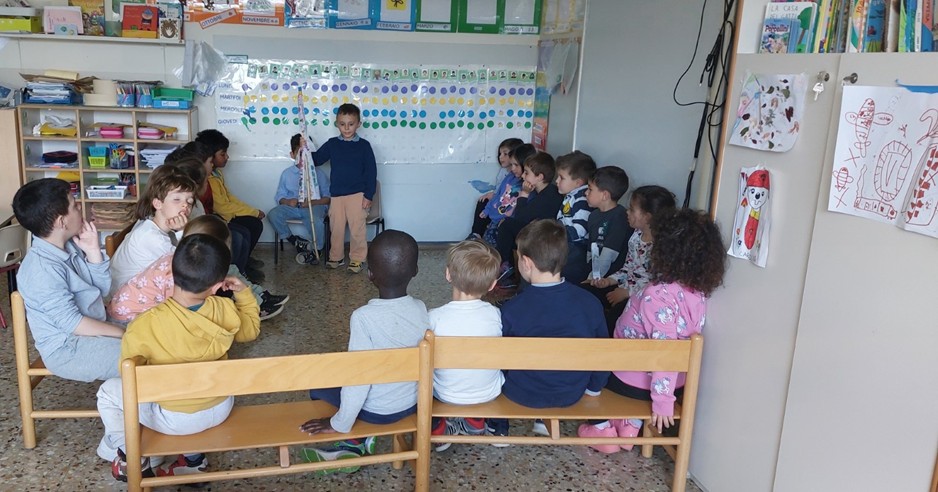 |
Teacher(s): Maria Simona Massaro
Affiliation: Istituto Comprensivo Sestini, Italy (IT)
This case study arises from an experience tested one morning in the school garden. Some of the children were experimenting with a contact with the soil, others were searching for natural elements and were all so engrossed in these activities. When called by the teacher to go back to class, they continued in what they were doing. The teacher then began to tap one of the sticks collected by the children on the ground, thus attracting their attention. From this moment on, the stick became the means by which it was possible to attract the attention of the classmates, create silence and allow those who beat it on the ground to tell a story and be heard. |
|
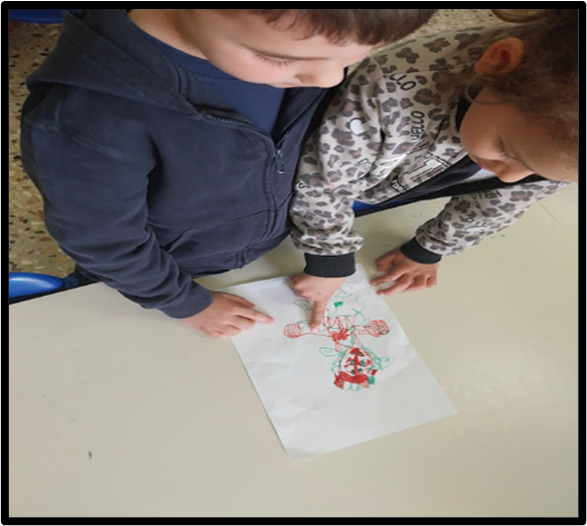 |
Teacher(s): Stefania Zani
Affiliation: Istituto Comprensivo Sestini, Italy (IT)
PURPOSE: To develop the ability to listen and pay attention to others as well as to enhance language and creative skills.
BACKGROUND: Heterogeneous group of 4- and 5-year-old children with listening and attention difficulties.
FOCUS: The teacher asks the children for a volunteer to read the morning story for him/her. The aim is an exchange of roles to make the children protagonists, to stimulate them to get involved and find ways to engage and capture the attention of their peers by creating curiosity and interest.
Evidence gathered: documentation was made available to the children and then sent to their families. |
|
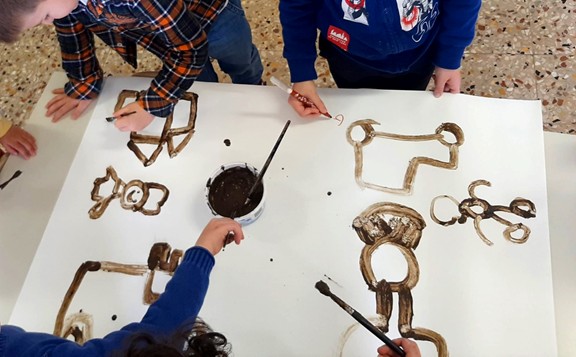 |
Teacher(s): Benedetta Piccioli
Affiliation: Istituto Comprensivo Sestini, Italy (IT)
Mud stories is a path where a natural element such as mud and a single drawing, linked to others, give rise to new stories invented by children. This activity was created to strengthen fine motor skills and storytelling in the boys and girls of the section, in a context of sharing. The class group is made up of 29 children of different ages (21 boys and girls aged 5\6 and a small group of 8 aged 4\5). |
|
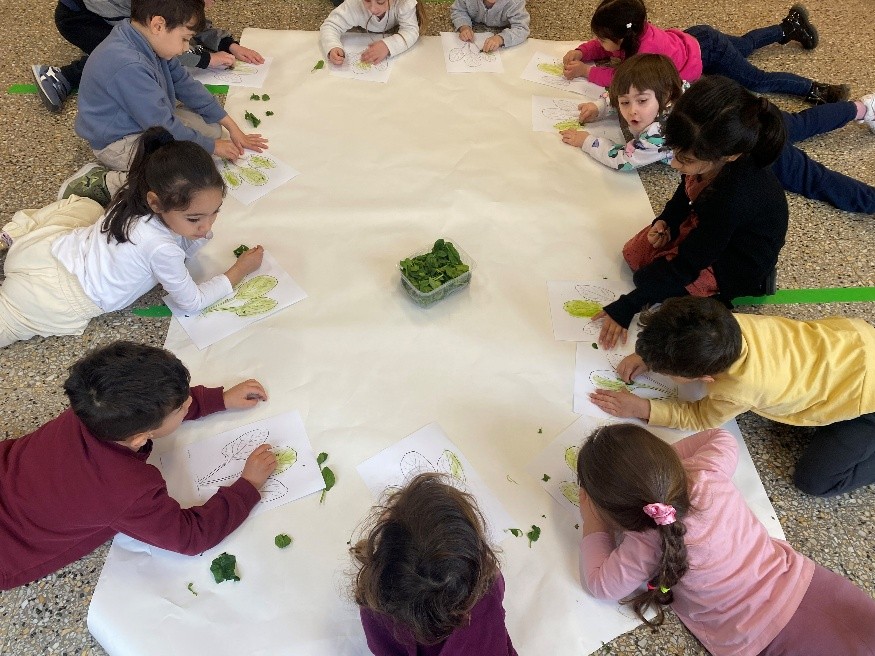 |
Teacher(s): Sandra Signori
Affiliation: Istituto Comprensivo Sestini, Italy (IT)
Purpose: to foster curiosity and knowledge of food through sensory exploration, asking questions and drawing answers based on their observations.
Context: heterogeneous groups in terms of age and skills.
Documentation of the processes by phases: children used the five senses to observe, describe, smell, taste and manipulate vegetables and fruit, in various and different ways: they coloured, painted, observed and described, composed animals and things, made stamps to create. The sharing of the collected material with the families (graphic works, photos, audio recordings) occurred through restitution and publication on the institutional channel Teams by Office 365. |
|
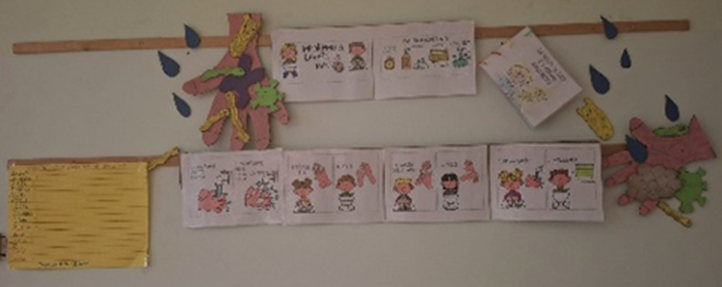 |
Teacher(s): Claudia Guastini
Affiliation: Istituto Comprensivo Sestini, Italy (IT)
After a trip to the garden, the children noticed that their hands were dirty with soil: from this spontaneous observation a project on hand washing was born, as a gesture of care, autonomy and hygiene. The path develops through practical activities, symbolic games, visual materials and moments of discussion, also involving families and school collaborators. The teacher documents the experience by enhancing the children's thinking and encouraging the internalization of daily routines. The project represents an example of active learning in kindergarten, where everyday life is transformed into an educational opportunity and personal awareness. |
|
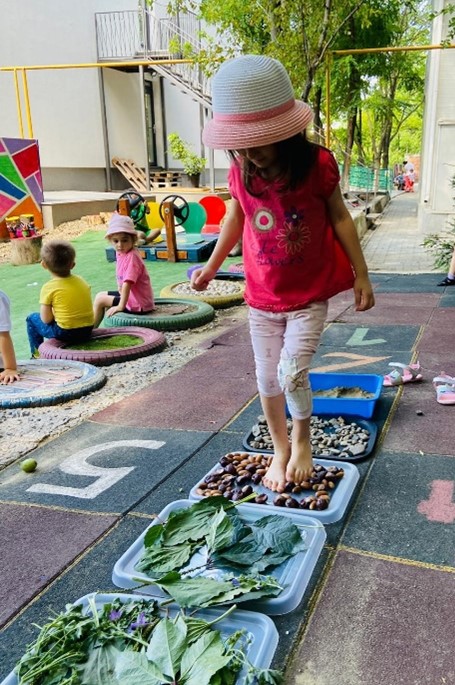 |
This case study looks at how a group of kindergarten children (3-4 year olds) interact and learn through a series of sensory activities with natural materials: sand, water, shells, rocks and cones. The aim is to stimulate the senses, develop descriptive language and group cooperation. The activity was documented by observations, photographs. The analysis is based on pedagogical literature on early sensory learning and provides reflections on how pedagogical documentation supports holistic development. The study highlights the importance of the environment and children's active involvement in exploration. |
|
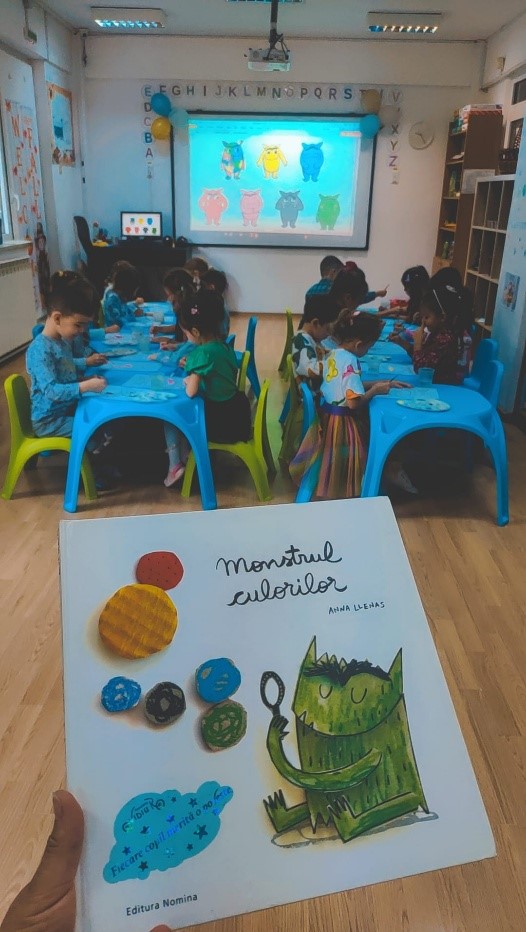 |
This case study examines the impact of using the Color Monster story in supporting children to identify, understand and express emotions. The focus is on emotional development through individual exploration, group collaboration and family involvement. The activity was carried out in a pre-school setting, using storytelling, creative art and interactive discussion. Evidence collected includes children's drawings, emotion journals, group projects and feedback from families. Observations showed an increase in emotional vocabulary and self-awareness. Reflections emphasize the effectiveness of storytelling as a narrative and visual tool and the importance of early emotional education. |
|
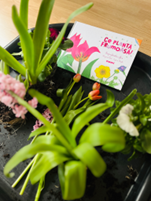 |
This case study focuses on engaging preschool children (ages 3-4) through sensory activities based on forest animals. The aim is to promote sensory exploration, creative expression, and an understanding of the natural environment. Key activities include a nature walk, using flour to create animal tracks, and painting a fox. |
|
 |
This case study focuses on engaging preschool children (ages 3-4) through sensory activities based on forest animals. The aim is to promote sensory exploration, creative expression, and an understanding of the natural environment. Key activities include a nature walk, using flour to create animal tracks, and painting a fox. |
|































